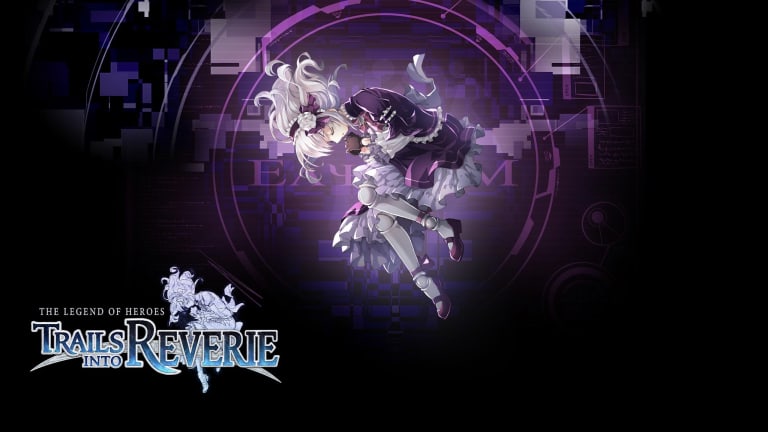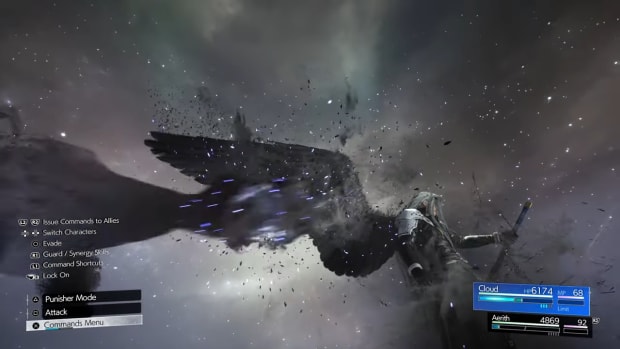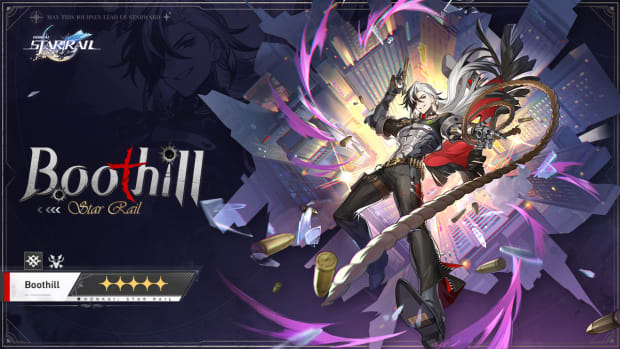
The Legend of Heroes: Trails into Reverie is a thoughtful farewell

A cop, a soldier, and a war criminal walk into a room. That’s the basic idea behind Nihon Falcom’s Trails into Reverie, a game with the unenviable task of serving as epilogue to a whopping six previous RPGs and setting the stage for what comes next in the longrunning series. Despite the weight of so much responsibility, Reverie pulls it off admirably and even manages to balance more narrative and character stories to a greater degree than the games that came before it.
Trails from Zero through Cold Steel 4 relentlessly pushed the series’ main story forward to the point where no character had a chance to stop and consider their actions or even anything that was going on around them. That’s understandable, to an extent. When you’re trying to stop a continental war from breaking out, you don’t have much room to stop and meditate. The problem is that it left the series feeling a bit, if not exactly shallow, then less dynamic and fully realized as it could have. Trails into Reverie does something that Falcom hasn’t let the series do for over a decade: It pauses and reflects on itself.
Reverie is about building a new life from wreckage, usually the wreckage of your own bad choices, without the luxury of pretending they didn’t happen and with the added burden of forgiveness. These heavier themes are unusual for a series that usually concerns itself with telling intricate tales of political machinations and social upheaval, and it’s refreshing to see these moments where major plot and character developments have deeper meaning aside from just existing to move the narrative forward.
That said, they don’t unfold evenly across Reverie’s three main routes.
Lloyd’s route and Rean’s route are the epilogue stories, wrapping up loose ends from the Crossbell and Erebonian saga and dealing with the aftermath of war and imperialism.
Lloyd’s route follows the Special Support Section as they try liberating Crossbell for the third time. It’s an odd, imbalanced story, and I even did a double take when Erebonian forces invaded Crossbell for a second time after the prologue, wondering if I accidentally loaded the wrong save file.
Lloyd’s route is necessary for the other two, as the re-invasion of Crossbell kicks off events in Erebonia that spur Rean into action and run parallel to C’s efforts. The problem is that they aren’t necessary for Crossbell’s story or Lloyd and the SSS. Reverie introduces the idea that Lloyd and his friends became so caught up in the concept of being the city’s heroes that they forgot why they fought to begin with. It’s a nice idea in theory, but this supposed skewed attitude never showed up in any of the previous games, nor do you get even a small hint of it in Reverie.
What you do get, however, is an ending. Lloyd’s route finally lets the SSS move on with their lives and even digs out some much-needed answers from Crossbell’s dark past – and that bizarre mind-control mask scenario from Cold Steel 4.
Rean’s route centers on the story of a fallen nation brought low by its own pride and violence, examained through the series' usual lens of political realism that helps it stand out in the genre. Class VII averted a world war in Cold Steel 4, but the hatred and nationalism that fueled it didn’t just vanish overnight. Most Erebonians can’t stand the idea that their once-great nation is reduced to playing a secondary role on the world stage, and an extreme faction of the military thinks invading another country is the answer to its problems.
In the middle of all this is Rean, whose role in saving the nation made him a nationalist icon for the fringe faction – as if the poor lad didn’t have enough guilt and trauma to deal with from his role in Erebonia’s wars. Reverie isn’t just a retread of his insecurities and guilt, though. Rean finally stops running from the consequences of his actions and learns to chart his own path and be vulnerable with the people who care for him. It’s a touching and satisfying end to his story that makes Rean one of the more emotionally complex and relatable protagonists in the series, even if it took five games to reach this point.
Despite this route featuring so many personalities – every character from the Cold Steel games shows up at one point – it does a better job of balancing character development than all four of its predecessors. Everyone plays an important role at least once and gets some measure of development or closure that they didn’t have at the end of Cold Steel 4, including new Class VII and even some of Rean’s former enemies who have to grapple with the horrible reality of their actions in the previous game.
If most of these words don’t make sense, but you’re still keen on playing Reverie, make sure to check out the story recap on the main menu. As an epilogue game, Reverie isn’t interested in flashbacks or summaries to help bring newcomers up to speed.
Reverie’s themes play out in their fullest and best forms in C’s route, though it’s tough to talk about without delving into spoilers. Suffice to say that C and everyone they meet live up to the route’s name: Miserable Sinners. It’s a broken, sad bunch of people, and the benefit of throwing so many traumatized souls together is that it creates opportunity for growth and interesting developments.
C’s route touches on the nature of redemption and identity and how to move forward when the life you knew before burns away, leaving you with nothing – and as nothing. This storyline has some of the most touching and memorable moments in the series, and it’s a direction I hope future Trails games take as well.
Reverie uses a staggered storytelling system that lets you choose which of these paths you want to take, but puts a hard stop on progression when you need to go finish other stories. It’s an “illusion of choice” situation. Stories unfold in a way where you probably won’t want to stop halfway through just to see what else is going on, and threads intersect neatly at those mandatory stopping points anyway.
In between major events, you’re forced to visit the Reverie Corridor, which you’ll recognize if you remember your Cold Steel 2 endgame. This space exists in a dimension of its own and conveniently lets all three parties meet up without them realizing it happened once they’re back in the real world. The Reverie Corridor is a succession of the series’ traditional, basic dungeons filled with monsters and simple puzzles, and while being forced through it several times might sound like a slog, it’s actually one of the game’s best parts.
Like in Phantasma in Trails in the Sky the 3rd, the Reverie Corridor is home to several side stories that shed light on certain characters or situations that the main game glosses over. You’ll unlock these – and other characters to fight alongside in the corridor – by spending materials earned from completing Reverie dungeons in a gacha-like system. The system is better than Sky the 3rd’s strict access requirements, though it’s still a slightly convoluted way to give you important narrative moments. I’d have preferred something more straightforward, though between adjustable difficulties and turbo mode’s speed boost, you can clear dungeon floors pretty quickly to get the materials you need.
Reverie’s main story is an impressive balancing act of characters and broader narrative events, but the side stories in the corridor are even better. Literally everyone gets a chance to shine, whether it’s in a background scene showing how a certain trio of assassins met or a short segment that wraps up lingering threads about two witchy sisters from previous games.
The battle system is mostly unchanged from how it works in Cold Steel 4, with one exception: United Front. This new feature activates when you have five or more party members and gives you the option to launch a powerful physical attack, use a strong magic attack, or trigger a potent recovery effect that restores health and craft points. Charges are limited each time United Front activates, so you need to plan carefully during some of the game’s protracted boss fights.
If you’re playing on higher difficulties, you need careful planning anyway. Reverie expects you to be familiar with the series’ combat and use every tool available, as most encounters are significantly more difficult compared to their counterparts in the Cold Steel and Crossbell games.
United Front might be the only substantial change to a battle system that’s already a decade old, but Reverie still manages to make fights feel fresh. That achievement comes in part from the way Reverie structures its routes. Your party usually has some kind of balance in the main story, though you often can’t choose which characters you fight with. The real draw is battling in the Reverie Corridor, though. In addition to unlocking side stories from the gacha machine there, you can also summon characters from throughout the series and build the most ridiculously overpowered or oddly balanced teams you can imagine. Cold Steel 2’s corridor didn’t really appeal to me, but the sheer variety of options at your disposal in Reverie’s version makes it much more interesting and enjoyable.
Despite stumbling a few times in Lloyd’s route, Trails into Reverie is an impressive game that takes the series into emotionally and narratively deeper territory. The battle system might be familiar, but Reverie brings out its full potential – even if you aren’t patient enough to try and collect every character. The Trails series felt like it was stuck in a rut for a while, but Reverie imbues it with new energy and potential and promises a brighter future ahead.
Score: 9/10
- Story: 8/10
- Gameplay: 9/10
- Mechanics: 10/10
- Audio and visuals: 9/10
Platform tested on: Nintendo Switch
Trails into Reverie technical breakdown
I played the Switch version of Reverie, and while it holds up remarkably well, there are a few downsides to the portability. Character models are slightly less crisp, and the framerate seems to drop at times in busier areas, especially in Crossbell City. I also encountered a few crashes, though after speaking with other reviewers, these don’t seem like a Switch-specific issue.








